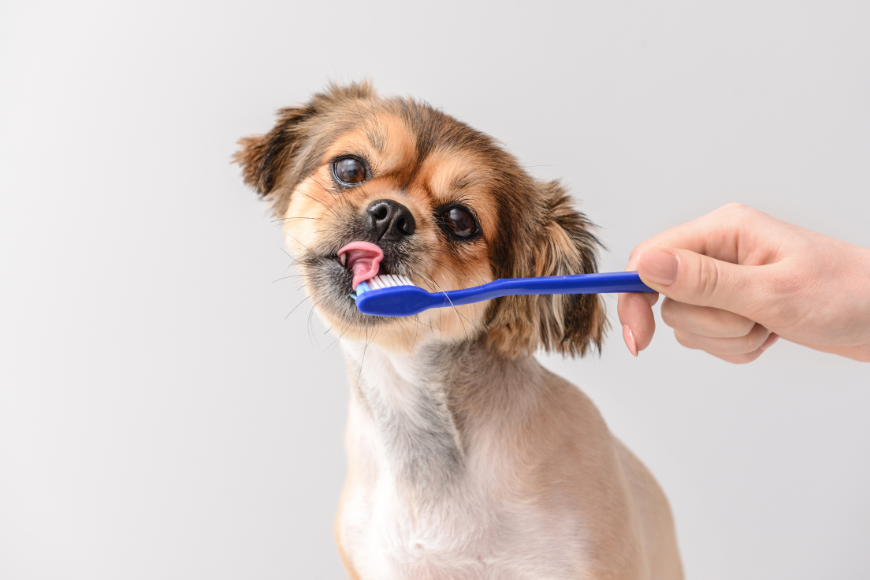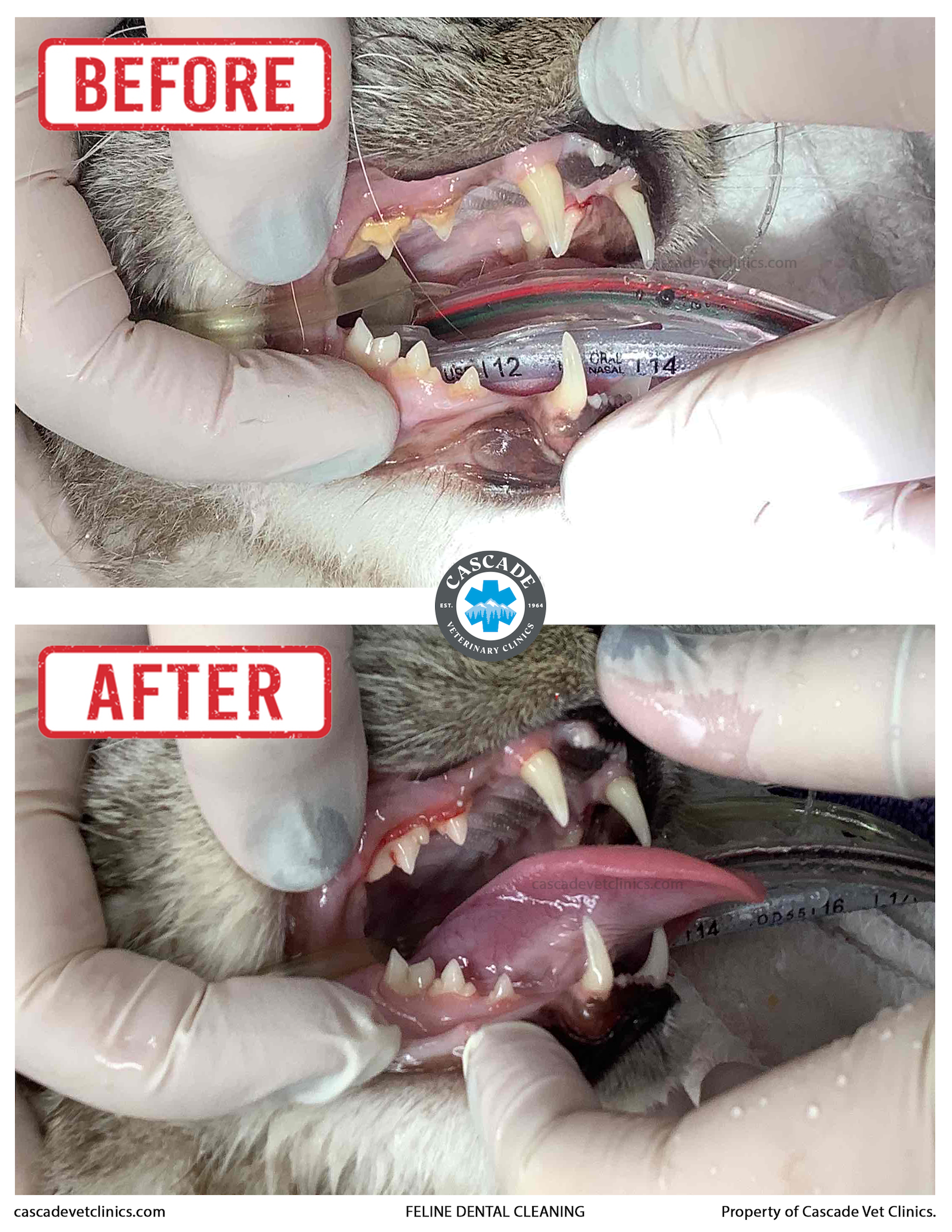Pet Dental
Pet dentistry is the specialized care that addresses the dental needs of animals. Just like humans, pets can suffer from dental problems, including plaque buildup, gum disease, and tooth decay. Pet dentists provide services such as cleanings, extractions, and oral surgeries, ensuring our animal companions maintain optimal oral health. By addressing dental issues proactively, pet dentistry plays a crucial role in enhancing the quality of life for pets.
(click to enlarge image)
At-Home Pet Dental Care:
By the age of three, many dogs and cats exhibit some level of dental disease. Periodontal disease stands out as the most prevalent issue affecting adult dogs and cats. Fortunately, it is a preventable condition. A comprehensive dental cleaning marks just the starting point. We hope that through this guide, you can elevate your pet’s dental health to the next level and maintain their bright smile!

How to Start: Brushing Pet’s Teeth at Home
*Please note: Avoid using human toothpaste on your pet*
- Approach teeth cleaning with patience and praise, initiating the process as early as possible, especially with a puppy or kitten.
- Select a comfortable and soothing area in your home for your pet to make the experience more relaxing.
- Begin slowly by practicing lifting your pet’s lip and gently touching their teeth to help them acclimate to having their mouth manipulated.
- Once your pet is comfortable with the previous step, introduce the enzymatic toothpaste. Allow your pet to sniff and lick some toothpaste off your finger to familiarize them with the taste without feeling threatened.
- Introduce the toothbrush only when your pet is comfortable and not resistant to having their mouth touched by your fingers. Never leave your pet unattended with the toothbrush, as it could be harmful if ingested.
- After a few days, attempt to spread some toothpaste on their front teeth and follow up with immediate praise.
- When both you and your pet are ready, apply toothpaste to the toothbrush and gently scrub your pet’s teeth in a slow, circular motion. If your pet resists, backtrack a few steps until they are comfortable, as learning to accept the toothbrush can be intimidating.
- Gradually establish a brushing routine, starting with the outside teeth and progressing towards the rear teeth over time.

Proper Brushing Techniques:
Using a Toothbrush:
- Apply enzymatic toothpaste to a soft bristled (kid) toothbrush.
- Place brush at a 45-degree angle to the tooth.
- Using a gentle, circular sweeping motion, stroke away from the gums whenever possible, as this action effectively brushes away plaque.
Using a gauze sponge:
- Apply enzymatic toothpaste on a gauze sponge wrapped around your finger.
- Wipe teeth with gauze sponge using gentle, circular motions
If you are unable to perform these steps on your pet, please note we also offer a 10% discount for dentals when the appointment is made within a month of their exam


